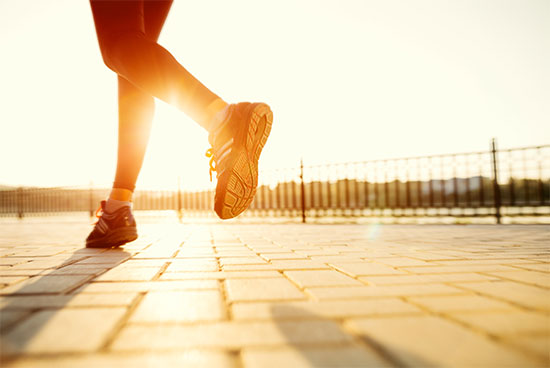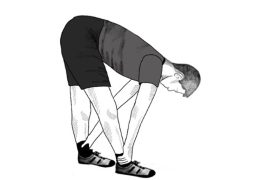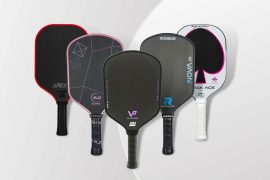Flexibility training is indeed a crucial element of a well-rounded and healthy running routine for runners. Incorporating regular flexibility exercises helps maintain the flexibility of muscles and preserves joint range of motion. When joints cannot move through their complete range, muscles may become tight and shortened, leading to discomfort and limiting overall running performance.
Moreover, tight muscles can increase the risk of injuries. By dedicating time to flexibility training, runners can enhance their mobility, reduce muscle tightness, and contribute to injury prevention. Stretching exercises targeting key muscle groups can improve overall flexibility, allowing for a smoother and more efficient running stride.
Essential Muscle Groups Every Runner Should Stretch:
The specific muscle groups that runners should focus on when it comes to stretching. The quadriceps and hip flexors are indeed crucial areas, often subjected to extra stress in running. Overcompensation with these muscle groups can lead to tightness, potentially affecting long-term performance.
Tight hip flexors may limit hip extension during running, preventing the full engagement of the glutes and hindering speed. On the other hand, tight quadriceps can contribute to overstriding, where the front foot lands too far forward. This can result in stiffer, straighter legs that struggle to absorb landing forces properly, increasing the risk of injuries to the shin, knee, or hip.
The quadriceps and hip flexors, tightness in the calves can also play a role in running injuries, such as plantar fasciitis, characterized by heel pain. Therefore, a well-rounded stretching routine that includes these key muscle groups can contribute to better flexibility, improved running mechanics, and a reduced risk of injuries.
tight calf muscles can contribute to various running-related issues, including Achilles tendinitis and knee pain. The connection between calf tightness and conditions like IT band syndrome underscores the importance of addressing muscle flexibility in runners.
Achilles tendinitis, resulting from inflammation in the tendon connecting the calf muscles to the heel bone, can be influenced by tight calf muscles. Additionally, calf tightness may lead to knee pain, both on the side of the knee and through IT band syndrome, caused by tightness in the iliotibial (IT) band.
Incorporating flexibility practices like targeted stretching can enhance the range of motion in the muscles used during running. This, in turn, may help prevent and alleviate muscle tightness, potentially improving overall running performance and reducing the risk of injuries. Regular stretching routines focusing on the calves, IT band, and other relevant muscle groups can be beneficial for runners in maintaining flexibility and promoting musculoskeletal health.
Stretches Essential for Every Runner’s Routine:
These stretches are beneficial for warming up before a run and cooling down afterward. Here’s a summary for quick reference:
Dynamic Stretches (Pre-Run):
1. Forward and Backward Leg Swings:
- Stand with feet hip-width apart.
- Swing one leg forward and backward in a slow, controlled motion.
- Repeat on the opposite leg.
2. Side-to-Side Leg Swings:
- Stand with feet hip-width apart.
- Swing one leg gently out to the side and across the front in a controlled motion.
- Repeat on the opposite leg.
3. Ankle Circles:
- Lift one foot a few inches off the floor.
- Rotate the ankle in small circles.
- Repeat on the opposite foot.
4. Windmill Reaches:
- Stand with feet shoulder-width apart, arms extended to the sides.
- Hinge at the hips and reach one hand toward the outside of the opposite foot.
- Alternate sides.
5. Walking Lunges:
- Step one foot forward, bending both knees.
- Alternate legs with each lunge.
6. High Knees:
- Lift knees toward the chest alternately.
- Perform in place or move forward.
7. Butt Kicks:
- Lift heels toward glutes alternately.
- Perform in place or move forward.
8. Skipping Arm Swings:
- Hop on one foot, lifting the knee.
- Swing arms out to the sides and then toward the torso.
- Alternate feet in a skipping motion.
Static Stretches (Post-Run):
9. Standing Quad Stretch:
- Lift one foot toward the glute, holding the ankle.
- Gently press the knee into the opposite thigh.
- Repeat on the opposite leg.
10. Supine Figure-4 Stretch:
- Lie on your back, cross one ankle over the opposite knee.
- Interlace fingers below the knee and pull toward the chest.
- Repeat on the opposite side.
11. Pigeon Pose:
- From all fours, bring one knee forward between the hands.
- Extend the opposite leg straight back.
- Square the hips and feel the stretch in the hip and glute.
- Repeat on the opposite side.
12. Runner’s Stretch:
- Stand in front of a wall, hands flat against it.
- Bend one knee and step the other foot back.
- Press into the wall to feel a stretch in the calf and heel.
- Repeat on the opposite leg.
Remember to perform these stretches with control and within your comfortable range of motion. Always listen to your body and consult with a healthcare professional if you have any concerns or existing conditions.
Disclaimer:
The information contained in this article is for educational and informational purposes only and is not intended as a health advice. We would ask you to consult a qualified professional or medical expert to gain additional knowledge before you choose to consume any product or perform any exercise.








